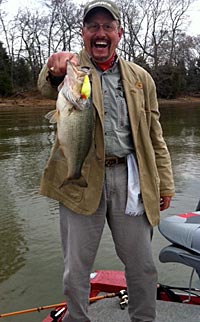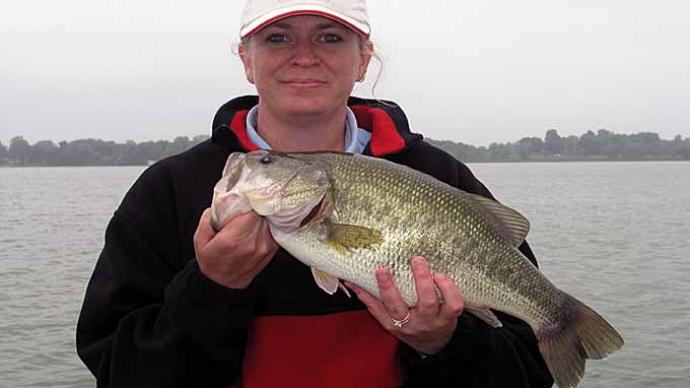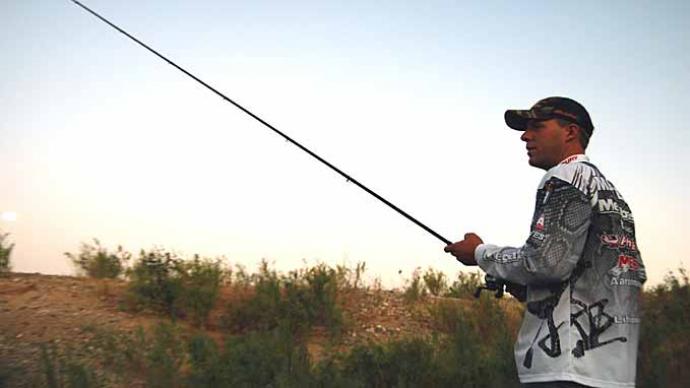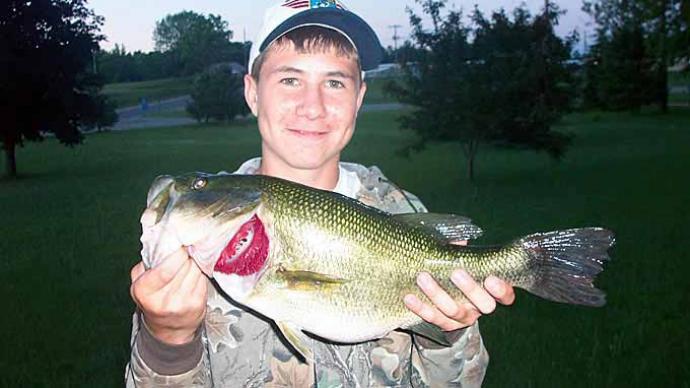
Don’t wait until the flowers bud and the birds nest to begin your spring bass fishing. Throughout much of the country, some of the best prespawn action begins in late winter. I’m referring to the early migration movements that bass make from their winter haunts to the spawning areas. Even though they may not spawn for weeks, bass begin to stir long before most anglers realize it.
Of course, if you live in the Northern part of the county where the lakes may still be covered with ice, that early migration may not occur for a month or so. But it will happen in some form, and, believe me, you don’t want to miss it. Why? Because big fish often are the first to make a move. Once you zero in on their locations, you can catch several bass weighing 5 pounds or more during a day on the water.
Timing is everything. In the Southeastern United States, bass begin to migrate when the water temperatures approach 47 degrees. In Northern lakes, where the fish are more accustomed to colder water, that migration could occur at much lower water temperatures.
Even though in the beginning the fish are deep, they seem to know that the shallows are warming. That’s what triggers the movement. Use a water temperature gauge to locate the warmest water and you can eliminate the rest of the lake.
On reservoirs, the migration begins on tapering main-lake points or large points that run from the shore to the channel of major creeks. Fish school on the ends of these points in late winter and move slowly toward shallow water with rising temperatures. As they become active, they’ll move even more shallow and get tighter to the cover.
On Northern natural lakes, the bass gang up on inside turns of hard-bottom breaklines, especially if there are rocks or green weeds in those turns. They’ll move on top of flats during the warmest part of the day and spend longer periods of time there if the weather is stable. My Northern friends tell me they’ve caught big bass around shallow, underdeveloped lily pad fields within a week after the ice has left the lake!
However, early-migration bass don’t always stay shallow or deep. They may move back and forth several times a day, so it’s important to check key areas often. And remember that lengthy warm-weather patterns draw them shallower, while abrupt weather changes will push them deeper.
Lure choices depend largely on where the fish are holding. Early in the prespawn migration, bass will suspend in the upper layer of water and can be caught on lipless crankbaits. However, my favorite technique for locating these nomadic bass is to fish crankbaits. Why? Because I can rig rods with three or four different sizes and fish a variety of water depths. More importantly, I can cover a lot of water in a hurry, which is important when I’m trying to locate roaming prespawn bass.
I also prefer crankbaits that run deeper than the bottom depths because I can work them slower along the bottom. That erratic bouncing off cover can trigger strikes from lethargic bass.
If I pinpoint the fish and they’re not aggressive, a jig tipped with an Uncle Josh Pork Frog is a better choice.
Of course, fishing the early migration may mean you’re out there fishing in undesirable weather. But that also means you don’t have a lot of competition from other anglers – and you’ll have those big fish all to yourself.
You can find more articles, quick tips and much more at HankParker.com.




